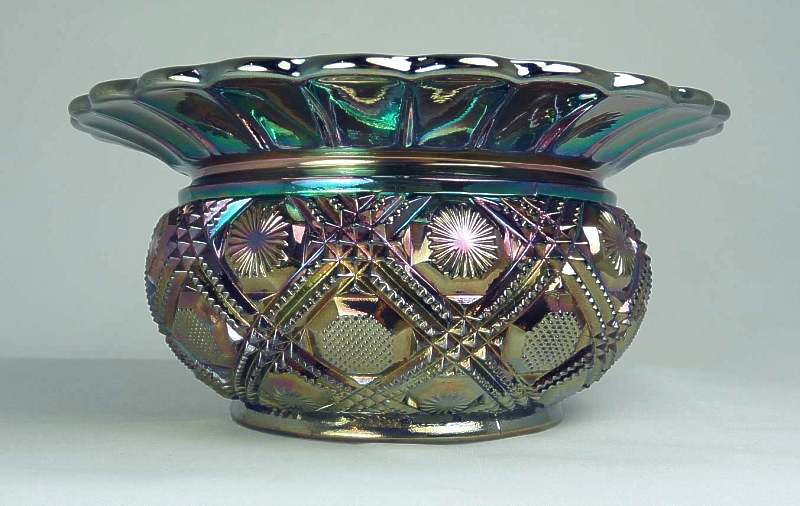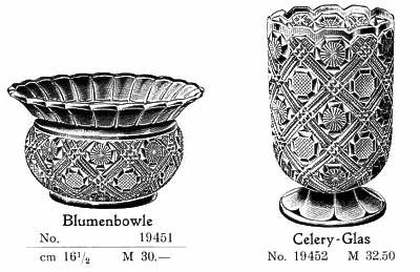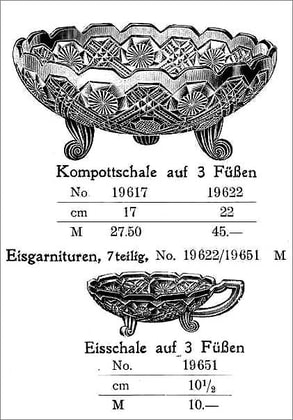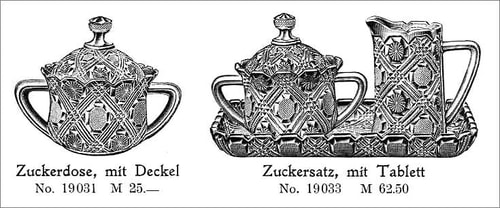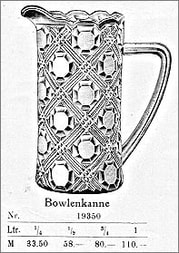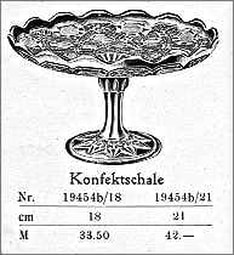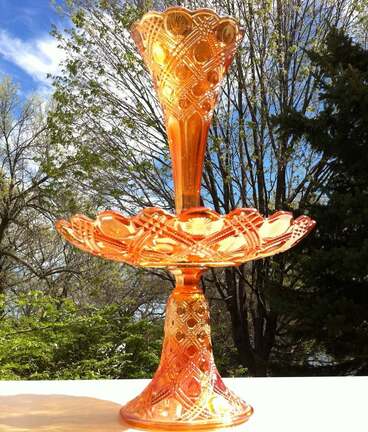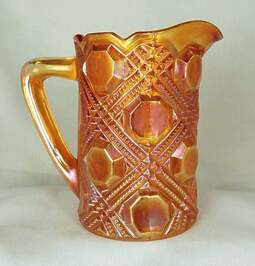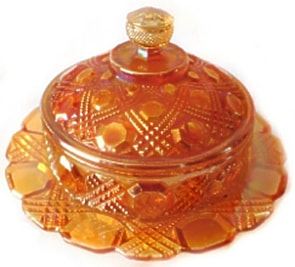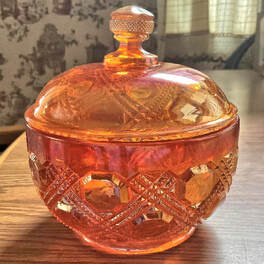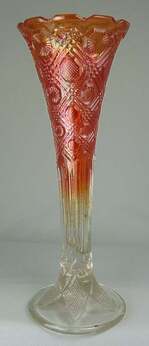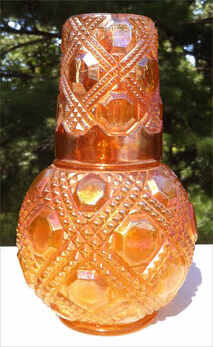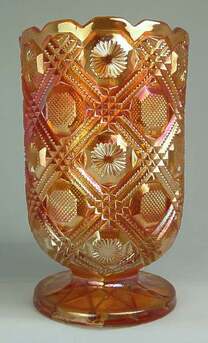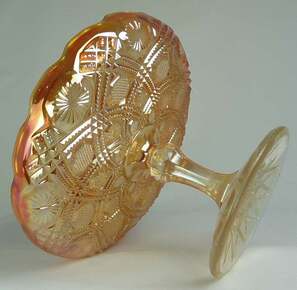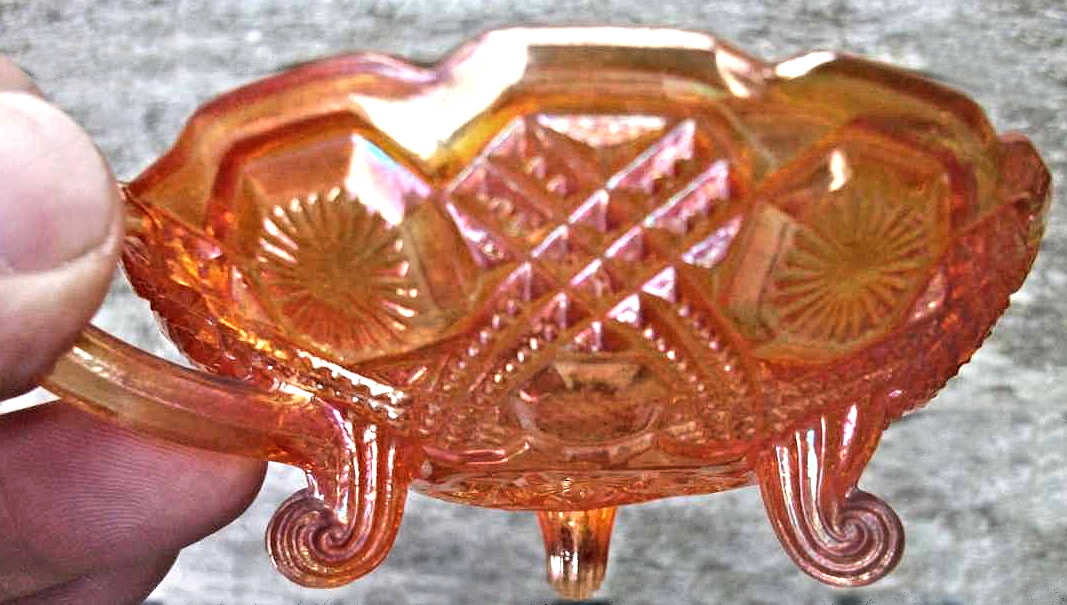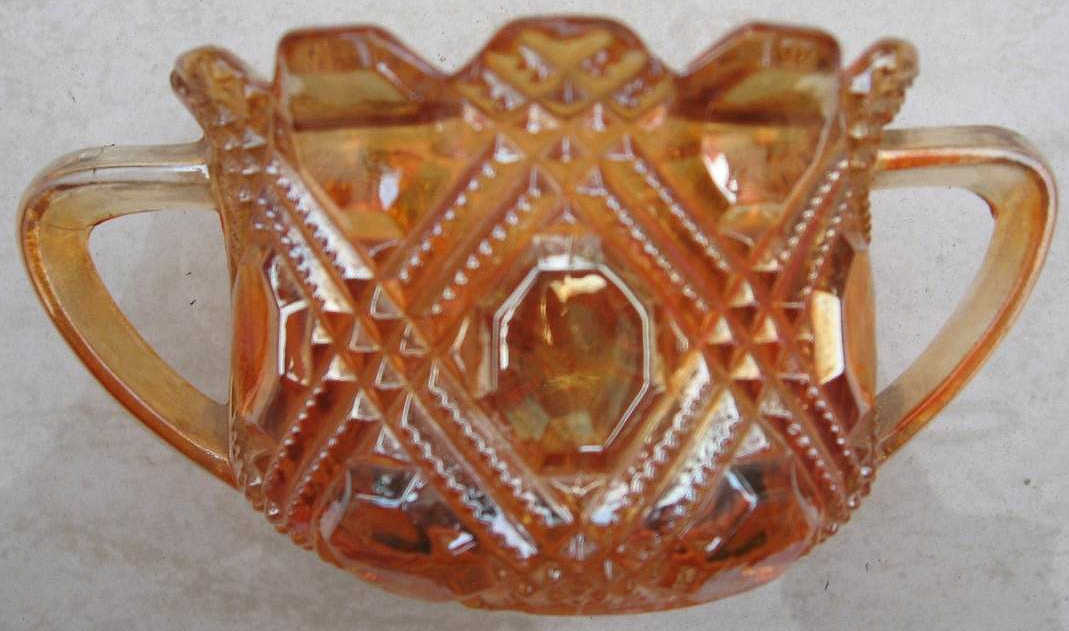Collectors Facts - Tartan, Brockwitz
|
Shapes:
Blumenbowl (cuspidor shape)
Bowls, various sizes, also scroll footed
Butter - lidded
Celery vase
Creamer
Cake Plate - stemmed (various)
Epergne, 13" & 15"
|
Colours:
|
|
The original Brockwitz name (OMN) for this pattern was Kopenhagen. It is also known as Daisy & Cane, Argyle, and Olympia.
A wide range of shapes in Tartan was illustrated in Brockwitz’ catalogues from 1915 (an extract is shown above), and undoubtedly, the 3-piece epergne is the most spectacular. Shown here on the right is the larger size The overall effect of Tartan is of criss-crossed diamonds that and flat-topped "buttons". Some items in Tartan also have a very distinctive flat sectioned top edge (referred to as a castellated edge), which is seen clearly on the top and the central section of the epergne on the right. There are three main variations of the pattern.
- variation 1: all the "buttons" are plain and smooth. This can be seen clearly in the images below of the creamer, butter and sugar. - variation 2: alternate buttons have either a file pattern or a floral “daisy” pattern (the so-called “daisy and cane” variation) while on the other main variation all the buttons are quite plain and smooth. The four pieces in the lower set of photos below are this version. - variation 3: all the buttons have the file pattern. This variation was illustrated in a 1923 issue of the British Pottery Gazette. The “daisy and cane” variation was shown in the 1915 catalogue while the plain button variation was shown in their 1928 catalogue. The likely explanation is that Brockwitz re-tooled the moulds, removing the “daisy and cane” effect and creating the flat, plain buttons. It seems likely that items with the “daisy and cane” effect are probably pre-1928. |
A marigold Tartan epergne, courtesy of the late Michael O'Brien.
|
Above, left to right: creamer; covered butter (courtesy of J&F Hodgson); covered sugar (courtesy of Marianne Murray Summers).
Above, left to right: vase, trumpet shaped; vase cylinder shaped (courtesy of Peter Phillips); tumble up (courtesy of Michael O'Brien; celery vase.
Above, left to right: stemmed cake plate: footed ice dish ("eisschale"); handled sugar (no lid).
